|
|||
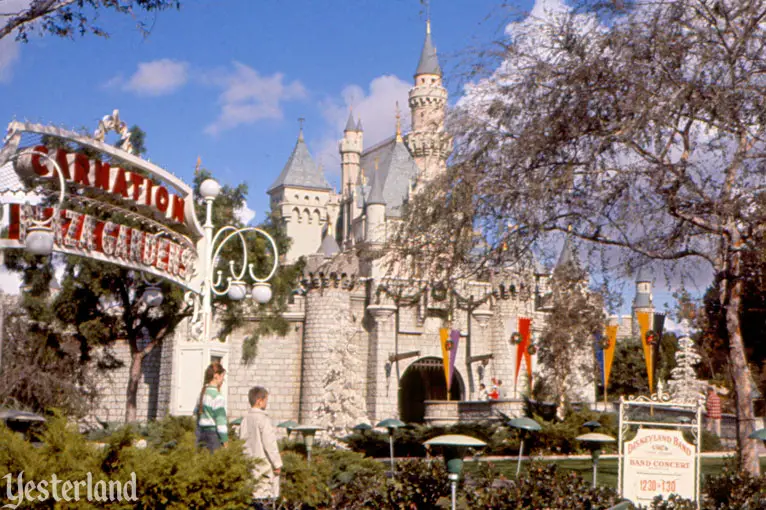
Photo by Roger J. Runck, 1961, courtesy of Robin Runck |
|||
|
Nestled between a medieval castle and a frontier stockade, Yesterland has an old-fashioned, open-air dance pavilion with a red-and-white canopy roof. |
|||
|
|
|||
|
Carnation Plaza Gardens takes you to the beginning of the 20th century, with plenty of white wrought iron and clear glass light bulbs. |
|||
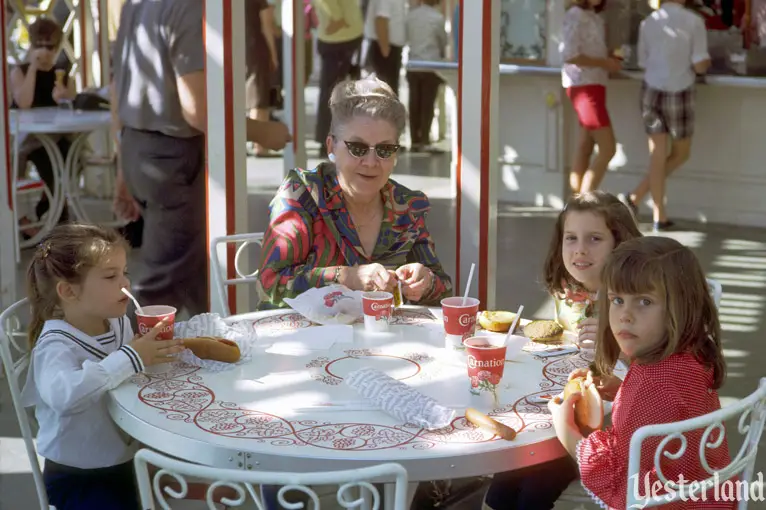
Photo by Charles R. Lympany, courtesy of Chris Taylor Hamburgers, hot dogs, and Carnation paper cups at Carnation Plaza Gardens |
|||
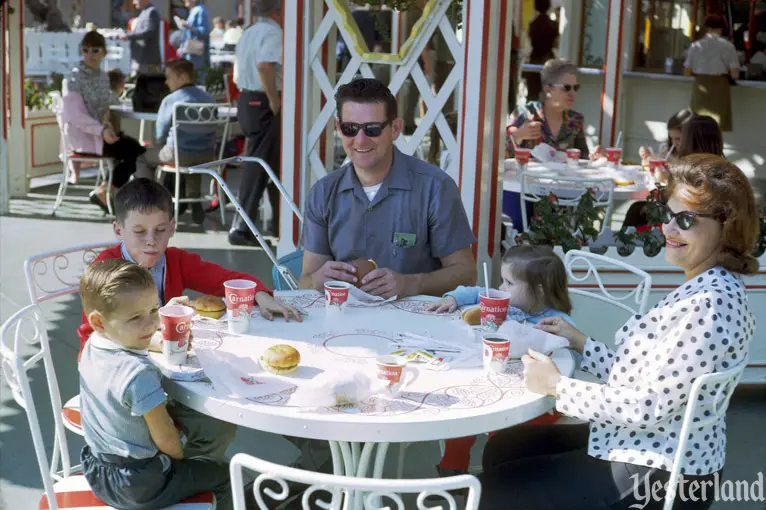
Photo by Charles R. Lympany, courtesy of Chris Taylor Another family lunch |
|||
|
Stop in for a quick hamburger or hot dog from one of the food windows. Given the name of this place, it’s not surprising that you can buy Carnation Ice Cream cones and sundaes here. Try Carnation’s Fantasia, with layers of dark cherry, pistachio and banana ice cream. There are plenty of tables and chairs—some beneath the canopy, some with red-and-white umbrellas, and some with just the sky above them. |
|||
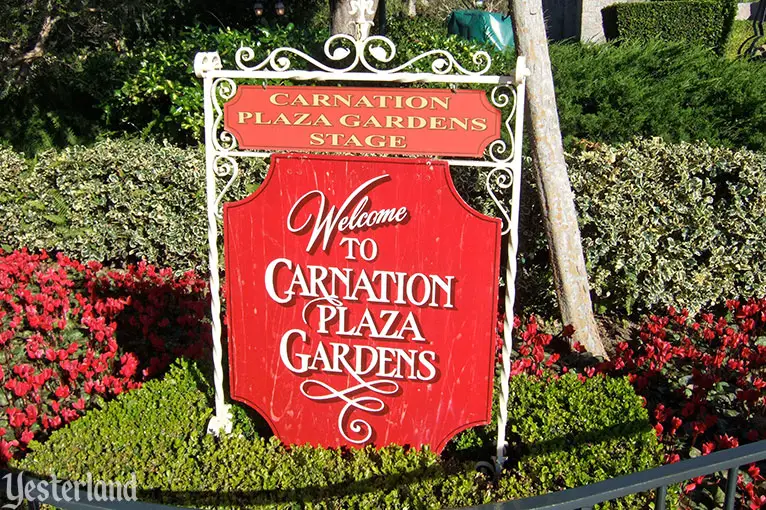
Photo by Allen Huffman, 2007 White wrought iron |
|||
|
If you time your visit right, you can eat your lunch while enjoying a concert by the park’s own band. You reached Carnation Plaza Gardens across a footbridge. The sign and the entrance haven’t changed much over the years (except for different patterns of burnt-out light bulbs)… |
|||
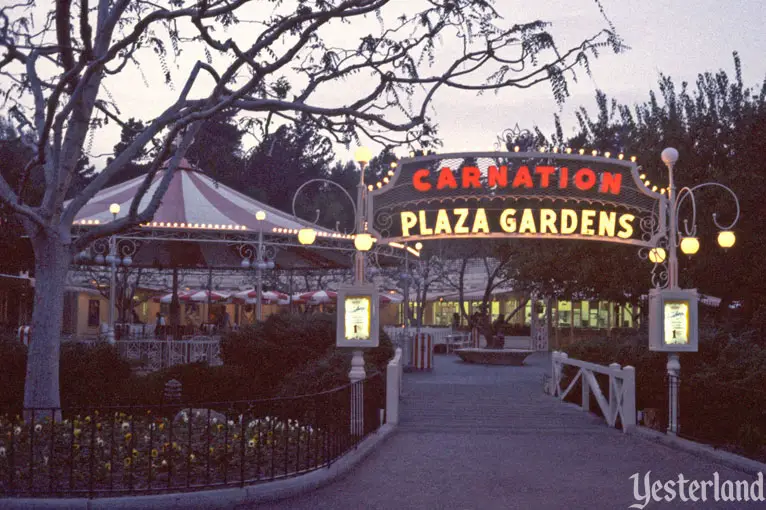
Photo by Werner Weiss, 1974 1974 |
|||
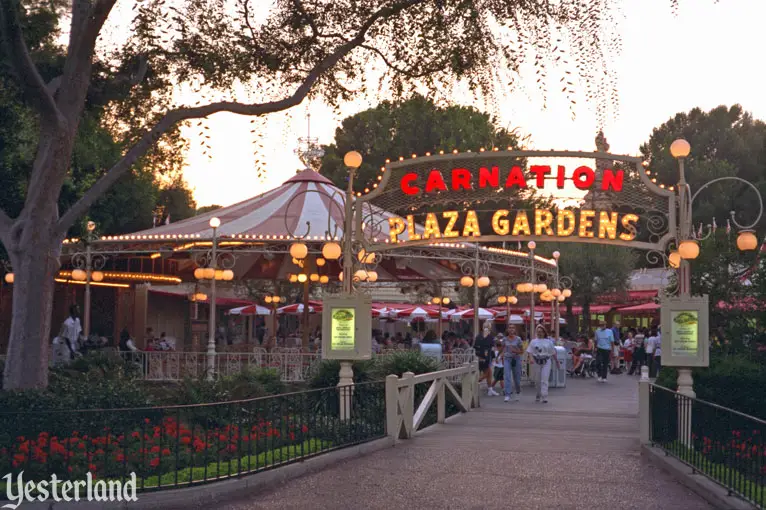
Photo by Werner Weiss, 1996 1996 |
|||
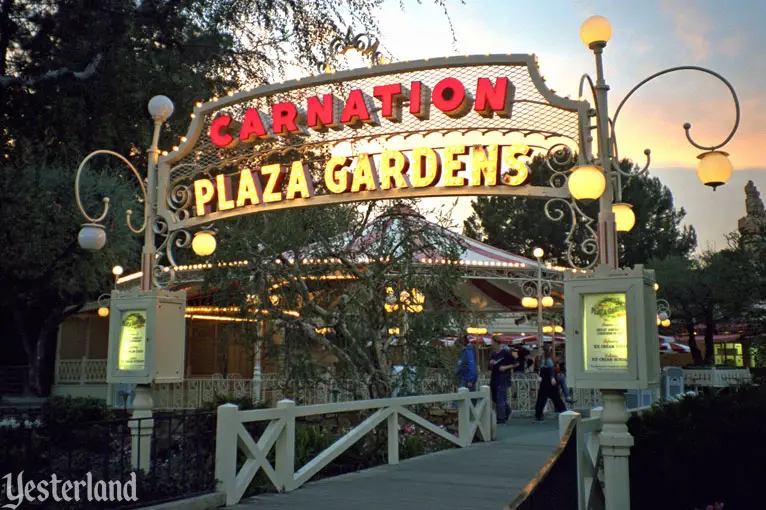
Photo by Werner Weiss, 1998 1998 |
|||
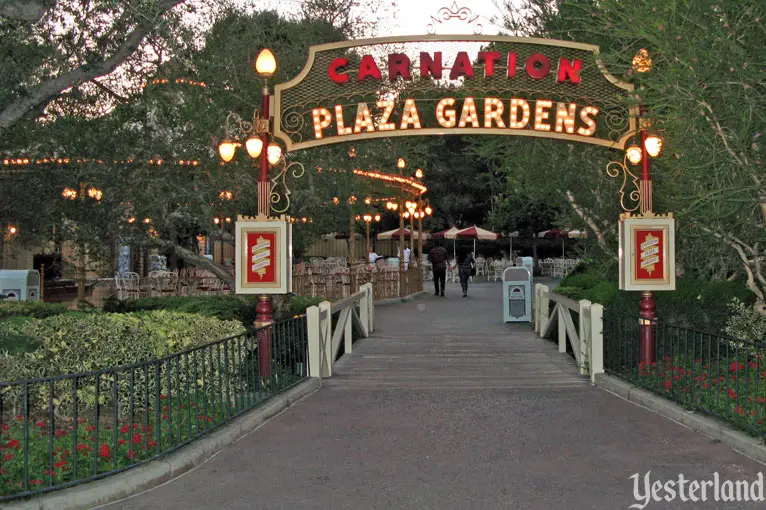
Photo by Werner Weiss, 2009 2009 |
|||
|
You hear music… |
|||
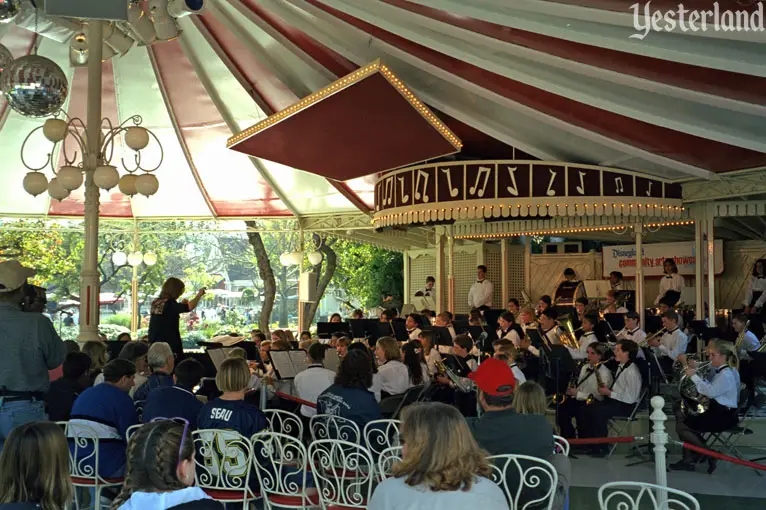
Photo by Werner Weiss, 1998 Community Arts Showcase |
|||
|
This is a multi-use facility. Sometimes young musicians from a school are performing. Sometimes you can take in a character show such as Fantasy Follies, Goofy Tuneups, Little Mermaid and Her Secret Grotto, Enchanted Book Shoppe, or Donald Duck’s Dandy, Dazzlin’, Dancin’ Revue. |
|||
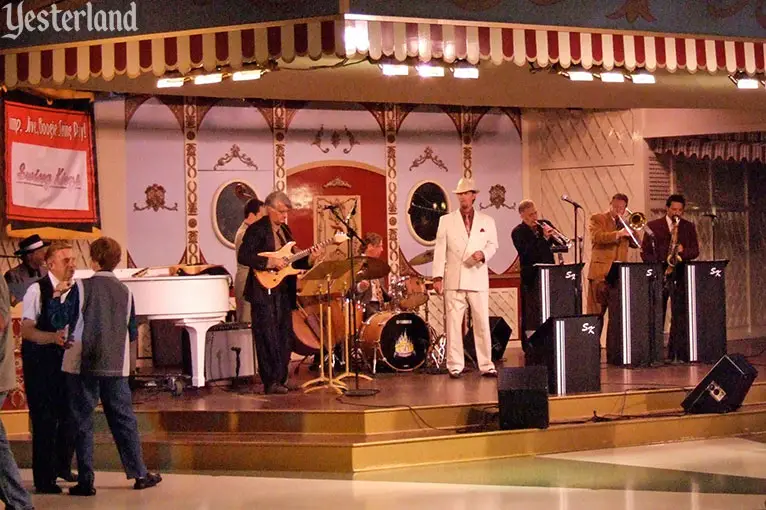
Photo by Allen Huffman, 2005 Swing Kings |
|||
|
But the big tradition here is Big Band music and Swing. When things are hopping, you’re transported 40 years forward in time from the Turn-of-the-Century to the Swing Era. |
|||
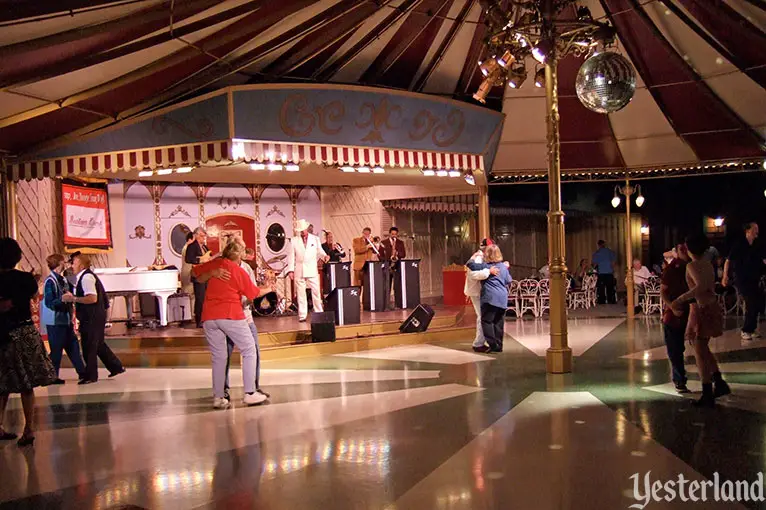
Photo by Allen Huffman, 2005 Dance Floor |
|||
|
Swing, Lindy Hop, or Jitterbug to the sounds of the Count Basie Orchestra, Woody Herman, Duke Ellington, Buddy Rich, or Lionel Hampton—or perhaps a lesser known band. |
|||
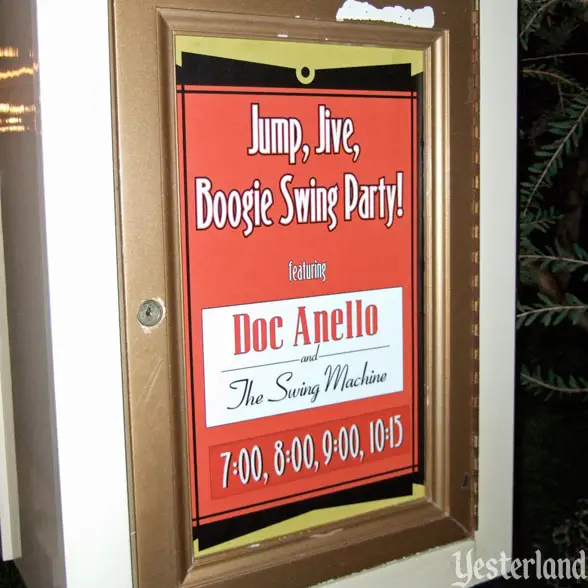
Photo by Allen Huffman, 2008 Doc Anello and the Swing Machine showtimes |
|||
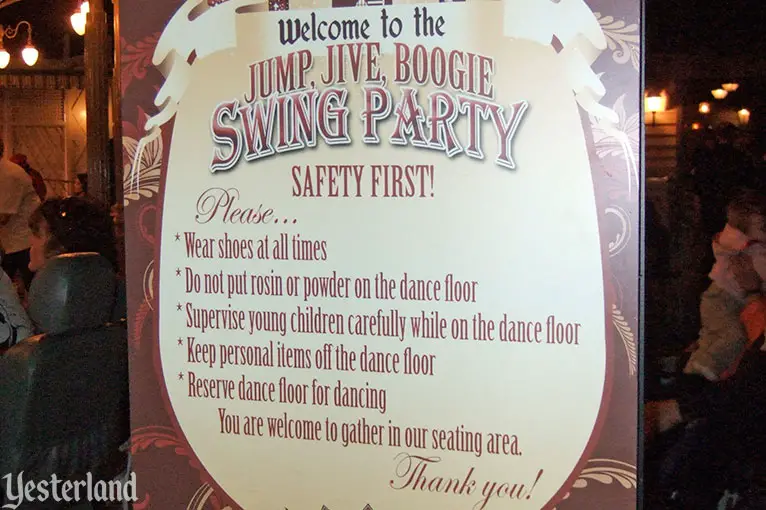
Photo by Allen Huffman, 2008 Safety first! |
|||
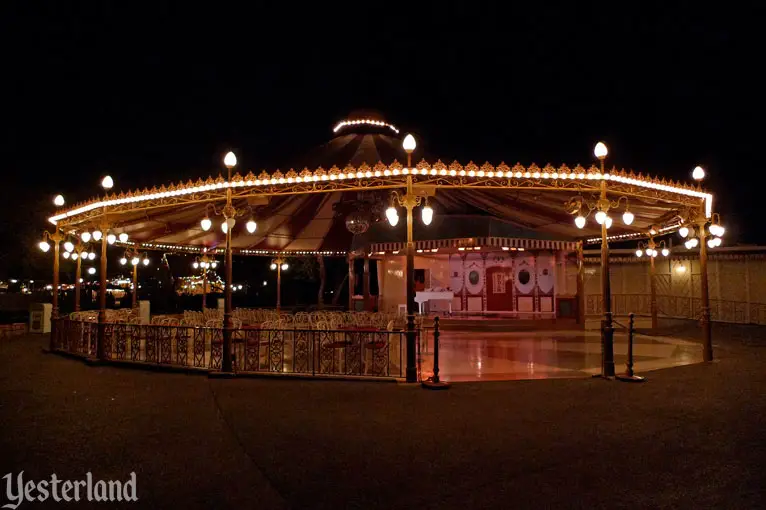
Photo by Allen Huffman, 2009 Good night |
|||
|
When the music ends and the people have left, you’re back in the early 20th century. There are electric bulbs everywhere but they’re not bright. That’s also how it was in the heyday of Kansas City’s Electric Park—a long-gone amusement park visited by a boy named Walt Disney who lived nearby. |
|||
|
|
|||
|
Carnation Plaza Gardens opened August 18, 1956—just 13 months after Disneyland opened. The parasol-topped dance pavilion replaced the gazebo bandstand, which was moved to Magnolia Park at the edge of Frontierland and Adventureland. |
|||
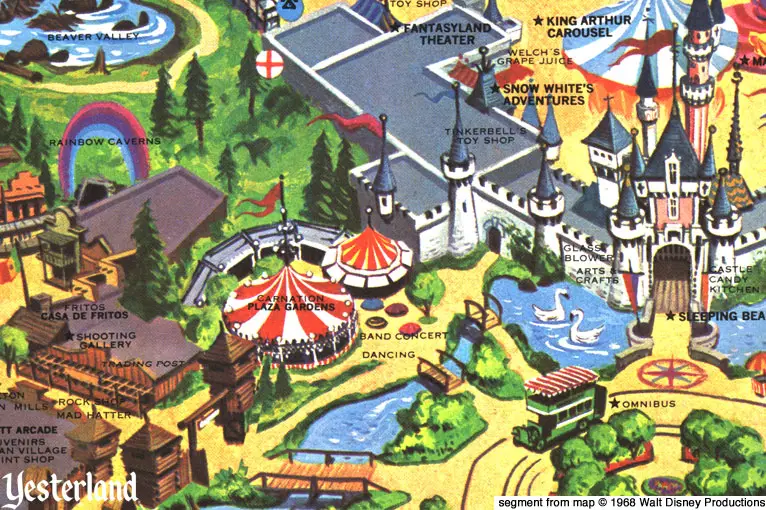
Copyright 1968 Walt Disney Productions A detail from the 1968 Disneyland Souvenir Map |
|||
|
For the 1957 summer season, Disneyland introduced “Date-Nite” Fridays and Saturdays—featuring Plaza Gardens and four other dance floors at Disneyland. The “Date-Nite” program was a huge success according to an article in the Los Angeles Times (“Fountain of Youth Overflows With Disneyland Date Nighters” by Barbara Jo Willcockson, August 18, 1957): Fantastically, nearly 8000 young people (70% of the attendance) are tallied every Friday and Saturday night as they enthusiastically pour in. They are noisy, they are delightful, they are everywhere. The management’s understandable qualms have melted into applause for “that terrific bunch of kids.” College age or high school, their whole hearted, trouble-free response has proved that this was just what they were looking for—plenty of room, infinite variety, minimum cost and a complete absence of liquor anywhere on the premises. (When was the last time anyone suggested that “minimum cost” is an attribute of Disneyland?) Carnation Plaza Gardens was not just used Fridays and Saturdays. During the 1957 summer season, its dance floor had music and dancing every night except Sunday. For the 1958 summer season, it became seven nights a week. A four-page Disneyland advertising supplement in 1959 (“We Love to Go There at Night,” Los Angeles Times, June 14, 1959), had this caption next to a drawing of couples dancing to the music of a live band at Carnation Plaza Gardens: A gay twirl with your best girl to the dance rhythms of Disneyland’s popular Date Niters band is a Summertime favorite every evening at Carnation’s Plaza Gardens. And after a lively Mambo, bouncy rock and roll tune, or dreamy fox trot, there’s no better way to “sit one out” than by treating that best girl to a mouth watering ice cream specialty made by everybody’s favorite, top quality Carnation products. The Date Niters band was later known as the Elliott Brothers Band. Bill and Lloyd Elliott established Disneyland’s Plaza Gardens as the place for Swing and the Big Band sound. |
|||
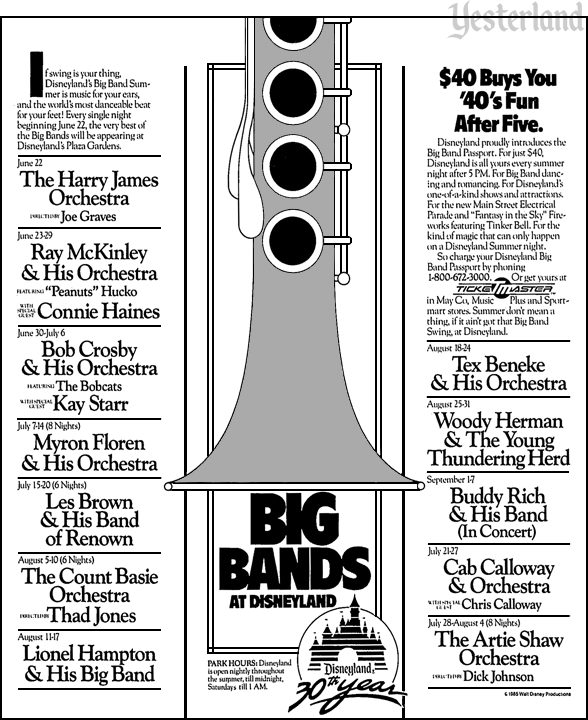
Copyright 1985 Walt Disney Productions Disneyland advertisement on June 16, 1985 |
|||
|
In the following decades—especially in the 1960s, 1970s, and 1980s—the Plaza Gardens dance pavilion would host most of the biggest names in Big Bands—including Ray Anthony, Count Basie, Charlie Barnet, Louie Bellson, Tex Benecke, Les Brown, Cab Calloway, Bob Crosby, Les Elgart, Duke Ellington, Mickey Finn, Myron Floren, Benny Goodman, Lionel Hampton, Woody Herman, Harry James, Stan Kenton, Wayne King, Gene Krupa, Freddy Martin, Ray McKinley, Buddy Rich, Artie Shaw, and Si Zentner. And even after legendary leaders had passed away, their bands kept their arrangements alive with new conductors—such as the Tommy Dorsey Orchestra conducted by Buddy Morrow or the Glenn Miller Orchestra under the direction of Jimmy Henderson. The height of Big Bands—the Swing Era—was around 1935 to 1945. But it survived at Carnation Plaza Gardens, much to the delight of its fans. The performers were equally delighted to play for enthusiastic Disneyland guests. For example… by 1990, Les Brown and His Band of Renown primarily performed at charity events, political fund raisers, private parties, corporate meetings, and golf tournaments—when they performed at all. A Los Angeles Times article (“Les Brown’s Band Keeps Swinging, Just Not So Often” by Zan Stewart, June 19, 1990) described 78-year-old Les Brown’s enthusiasm for an upcoming week-long engagement at Carnation Plaza Gardens: The theme park engagement is special for Brown. He played on the park’s opening day—July 17, 1955—and has performed there every year since as part of Disneyland’s summer big band series. And while other current engagements keep the band active, the Carnation Plaza Gardens affords the band a chance to really come alive. “I enjoy the Disneyland gig more than any other we play all year because the band can blow,” Brown says with exuberance, sitting on the back porch of his home in the Pacific Palisades, where ocean breezes and tall pines provide an idyllic ambience. “Actually, the only time we can blow out the way we like to blow out and play the arrangements that we recorded and the way we recorded them, full blast, is at Disneyland, or an occasional concert,” he adds. Over the decades, the tradition of Swing at Plaza Gardens continued, although the early 1990s saw a transition from name bands to bands such as Swingtown, Red & The Red Hots, and Stanford Freese and the Disneyland Big Band. |
|||
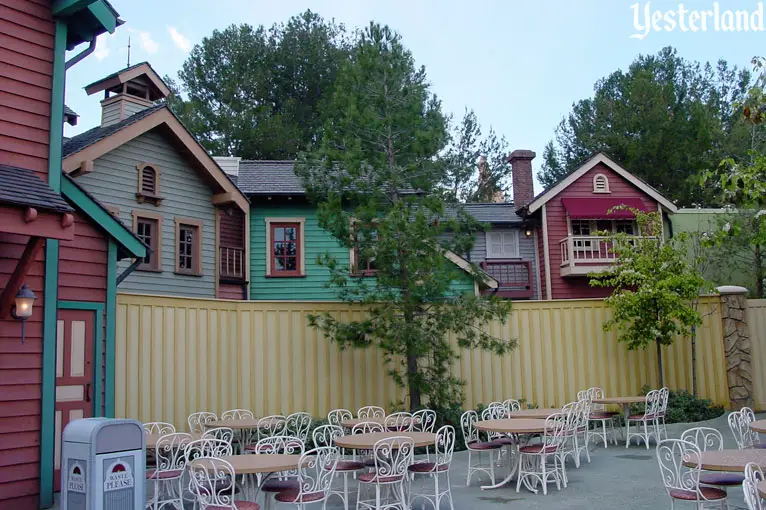
Photo by Allen Huffman, 2001 No food service windows |
|||
|
Around 1999, the food service windows at Carnation Plaza Gardens closed permanently. Frontierland’s Rancho Del Zocalo Restaurante opened in 2001, with a “shortcut” walkway to the tables of Plaza Gardens—overflow seating for Rancho del Zocalo. Even though it no longer served Carnation Ice Cream, the name did not change. After Nestlé discontinued the Carnation dairy brand entirely, Disneyland still had Carnation Plaza Gardens. It seemed it would stay there forever. It would not be forever after all. The final operating day of Carnation Plaza Gardens was April 30, 2012. Work began to transform the area into Fantasy Faire, an extension of Fantasyland with storytelling, refreshments, and princess meet-and-greets. But it was not the end of the popular Jump, Jive, Boogie Swing Party. It moved to the Westside Stage in the Downtown Disney District—with the promise that it would return to its old location upon the completion of Fantasy Faire. |
|||
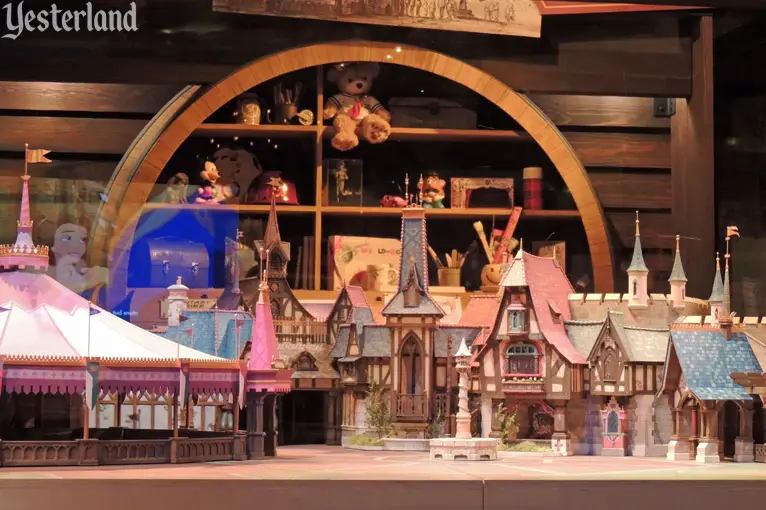
Photo by Werner Weiss, 2013 Model of Royal Theatre and Fantasy Faire at Blue Sky Cellar |
|||
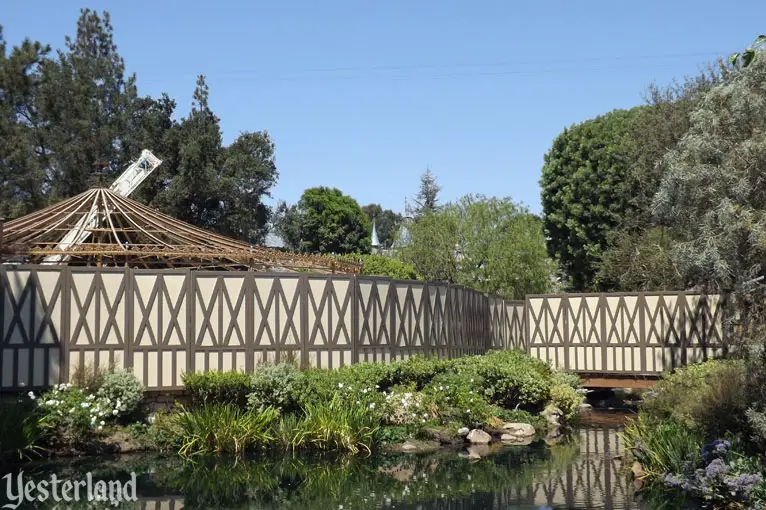
Photo by Chris Bales, 2012 Transformation |
|||
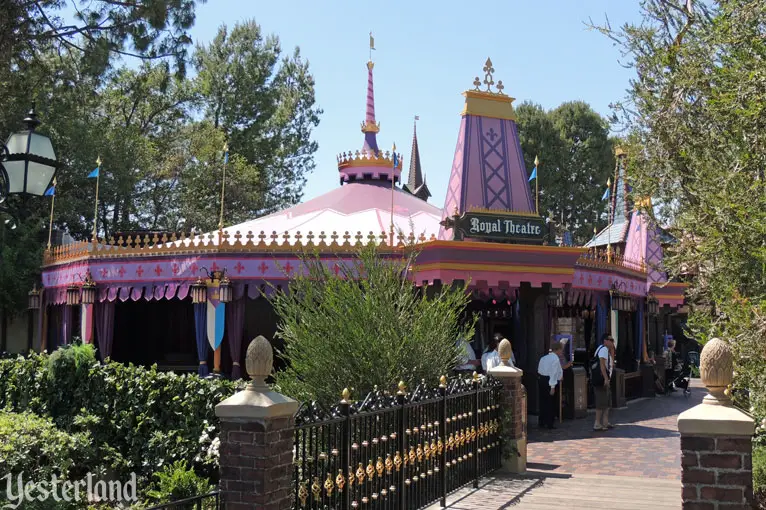
Photo by Werner Weiss, 2013 Royal Theatre |
|||
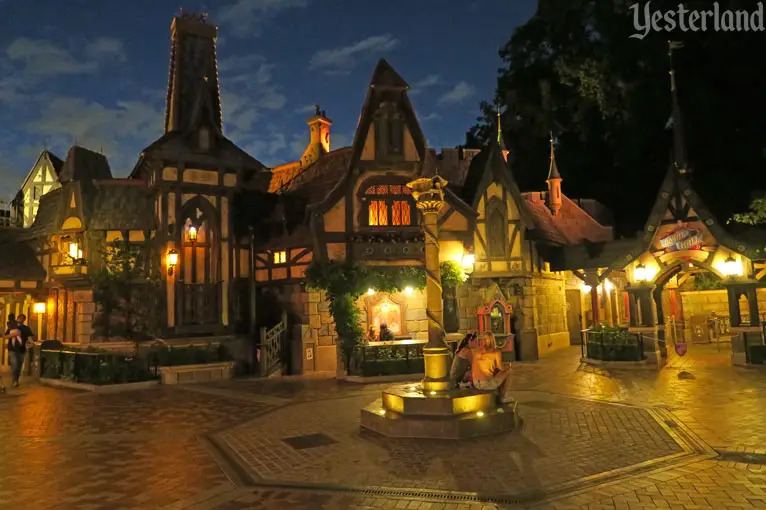
Photo by Allen Huffman 2017 Fantasy Faire |
|||
|
Fantasy Faire opened March 12, 2013. Although the project had been controversial with Disneyland fans, the results were impressive. The new corner of Fantasyland had charm and details that far exceeded what Carnation Plaza Gardens had offered, especially in its final years. The Royal Theatre was the old dance pavilion with a new look. The tradition of swing dancing to live Big Band music continues with The Royal Swing Big Band Ball on Saturday nights. |
|||
|
|
Click here to post comments at MiceChat about this article.
© 2014-2019 Werner Weiss — Disclaimers, Copyright, and Trademarks Updated October 25, 2019. |
||